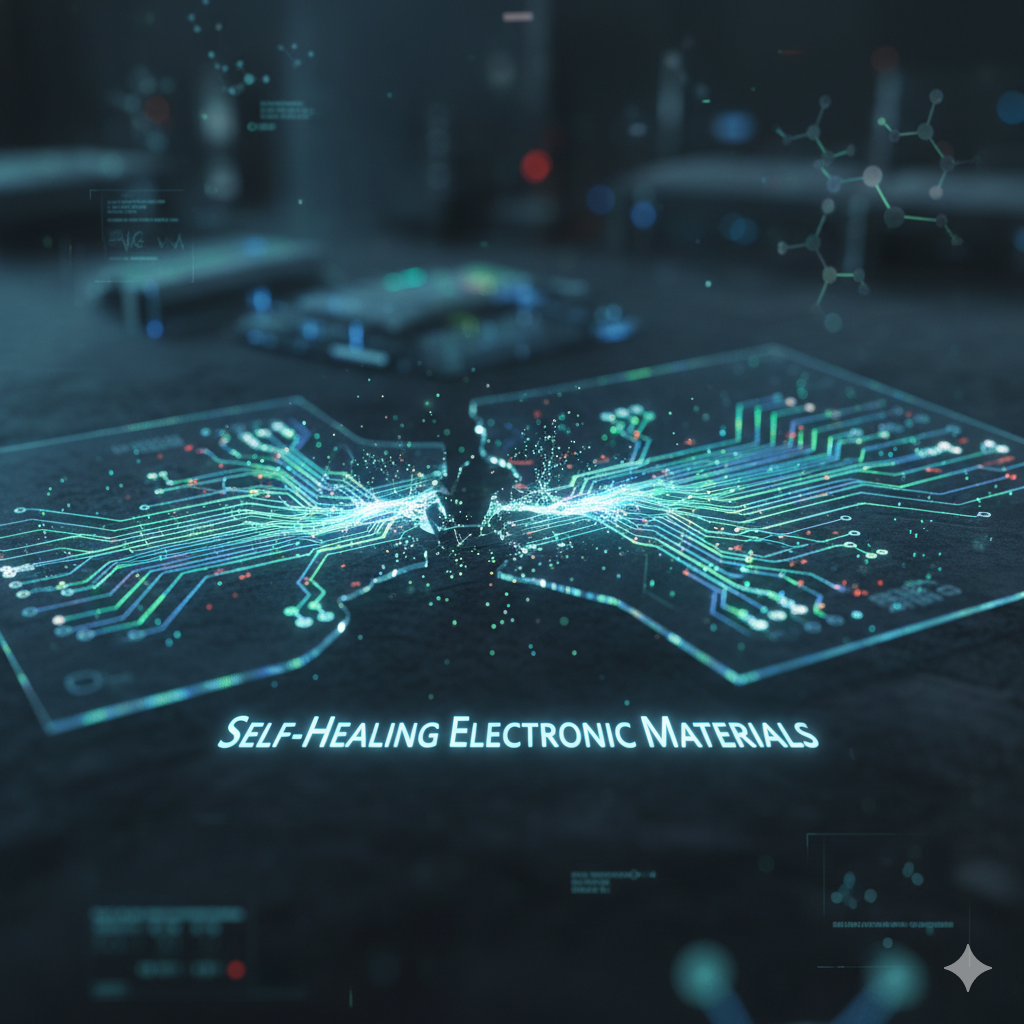🧩 What Are Self-Healing Electronic Materials?
Self-healing electronic materials are a class of smart materials that can automatically repair themselves after damage.
In the same way human skin mends after a cut, these substances fix fissures or fractures without external intervention.
Such a technique prolongs the lifespan of electronic gadgets and makes them more stable in operation.
🚀 Why Are They Becoming Popular?
Devices of the present era — e.g., wearables, smart sensors, electric vehicles, and flexible gadgets — undergo heavy bending and stressing cycles.
Eventually, they might develop cracks or may become faulty.
Self-healing materials address that issue by making repairs at the damage site thus maintenance, costs, and electronic waste are lowered.
⚙️ How Do They Work? (Simple Explanation)
- Microcapsule Healing
Microcapsules containing “healing liquid” are embedded within the material.
On a crack, the capsules rupture and the liquid is released, it seep the crack and the hardener inside it solidifies the crack — similar to glue.
- Self-Healing Polymers
These are plastics that can restore their destroyed bonds when they are provided with heat, light, or pressure.
There is no need for any other chemical to be added — the material just self-heals.
- Conductive Nanomaterials
After a break, materials such as graphene or silver nanowires replace the missing parts from the surrounding area.
In this way, the flow of electricity is restored.
🔧 Where Are Self-Healing Materials Used?
- Wearable Devices
Fitness bands, smart patches, and flexible screens are products that frequently bend.
These devices become more resistant to damage with the help of self-healing circuits.
- Electric Vehicle Batteries
Battery units for electric vehicles that have internal fissures can lead to a reduction of performance.
By using self-healing materials, these problems are averted, and the batteries can be used for longer periods.
- Aerospace & Defense
What planes, satellites, and defense electronics have to endure are very harsh situations.
With them, the risk of malfunction is significantly lowered.
- Industrial Sensors
Many smart sensors are used in factories.
If those sensors have self-healing capability, then the company will experience fewer downtimes and repair tasks.
- Smartphones & Gadgets
Tomorrow’s tech may consist of devices whose screen or circuit can heal minor scuffs or cracks without user intervention.
🌱 Benefits of Using Self-Healing Materials
- Longer device lifespan
- Requiring less repair or replacement
- Better safety and reliability
- Money is saved
- Helps by cutting down on electronic waste and thus benefitting the environment
🔮 Future of Self-Healing Electronics
Technologies that allow self-healing will not be a novelty anymore but will rather be trivially contained in almost any device of daily use from smart home systems to robotics and medical wearables in just a few years to come.
We won’t have to wait long for the help brought from AI and advanced materials research; new materials that heal quicker, last longer, and are cheaper will arrive soon.
